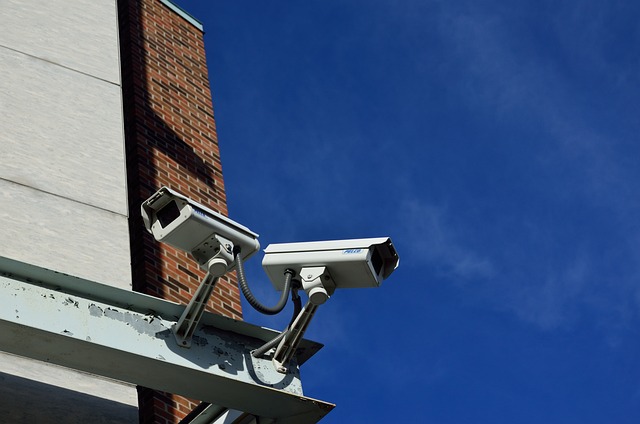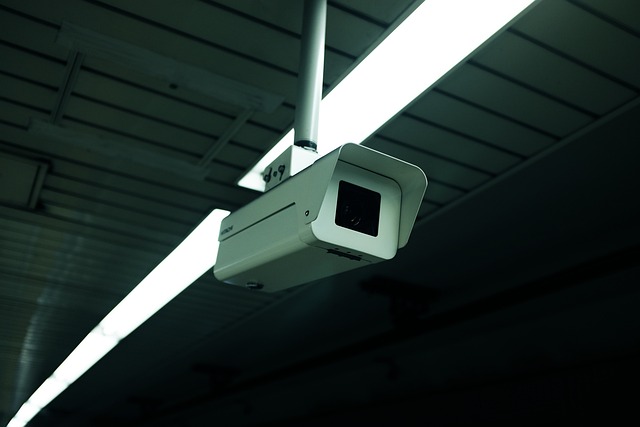Dome cameras have a discreet, sleek design and offer a wider viewing angle, while bullet cameras are more noticeable and have longer range.
TL;DR Dome Cameras Vs. Bullet Cameras
Dome cameras are discreet, sleek, and offer a wide coverage area with their 360-degree rotation capabilities. They are ideal for indoor use or in areas where aesthetics are important. Dome cameras also provide a sense of security as they are difficult to tamper with due to their dome-shaped design.
Bullet cameras are more visible and can act as a deterrent against potential intruders. They have a longer range and better zoom capabilities, making them suitable for outdoor surveillance in larger areas such as parking lots or entrances/exits. Bullet cameras also often come equipped with infrared technology for night vision.
Dome Cameras

Dome cameras are a type of surveillance camera characterized by their dome-shaped housing. This design aims to provide a discreet and unobtrusive appearance, making them suitable for indoor and outdoor security applications.
The dome casing also offers protection against tampering and vandalism, making them harder to manipulate or disable.
Dome cameras often come with features like pan-tilt-zoom capabilities and infrared night vision for enhanced monitoring in various conditions.
Their wide viewing angle and aesthetic appeal make them a popular choice for installations where aesthetics and functionality converge, such as retail stores, offices, and residential spaces.
Bullet Cameras

Bullet cameras are a type of surveillance camera characterized by their cylindrical and elongated shape, resembling a bullet or cylinder. They are often used for outdoor security applications due to their weather-resistant housing.
Bullet cameras typically have a more prominent and visible design compared to dome cameras, which can serve as a deterrent.
They are known for their longer-range capabilities and are often equipped with features like infrared night vision, making them suitable for monitoring larger outdoor areas.
Bullet cameras are commonly used in locations like parking lots, entrances, and perimeter surveillance setups.
Dome Cameras Vs. Bullet Cameras – Key differences
| Aspect | Dome Cameras | Bullet Cameras |
|---|---|---|
| Design | Dome-shaped, discreet, and sleek | Cylindrical, prominent, and visible |
| Placement | Indoor and outdoor installations | Primarily outdoor installations |
| Visibility | Less noticeable, blends with surroundings | More noticeable, may deter potential threats |
| Field of View | Wider angle coverage | Can have a narrower field of view |
| Tamper Resistance | Better protection against tampering | Moderate tamper resistance |
| Weather Resistance | Generally good for indoor/outdoor use | Typically designed for outdoor use |
| Aesthetics | Aesthetic appeal for indoor settings | May stand out, suited for deterrence |
| Installation | Ceiling or wall mounting | Wall mounting, often with adjustable bracket |
| Night Vision | Equipped with infrared for low-light | Equipped with infrared for night vision |
| Applications | Indoor spaces, retail, offices, homes | Outdoor areas, entrances, perimeter |
Pros and Cons of Dome Cameras
Pros of dome cameras
- Discreet Appearance: Dome cameras have a sleek design that blends well with various environments, making them less conspicuous and suitable for indoor spaces.
- Wide Viewing Angle: Dome cameras often offer a broader field of view, making them suitable for monitoring larger areas without the need for constant adjustment.
- Tamper Resistance: Their dome-shaped housing provides protection against tampering, preventing individuals from easily altering the camera’s direction or disabling it.
- Indoor and Outdoor Use: Many dome cameras are designed for both indoor and outdoor applications, offering flexibility in placement.
- Aesthetics: The unobtrusive design makes dome cameras more suitable for installations where aesthetics matter, such as offices and retail spaces.
Cons of dome cameras
- Limited Range of Movement: Some dome cameras might have limitations in terms of pan, tilt, and zoom capabilities compared to other types of cameras.
- Visibility Trade-Off: While being discreet, the less noticeable appearance might not serve as a strong deterrent in certain outdoor or high-security settings.
- Maintenance Challenges: Dome cameras require regular cleaning as dust or dirt can accumulate on the transparent dome, potentially affecting image quality.
- Complex Installation: Ceiling or high wall mounting can make installation more complex, requiring additional equipment and expertise.
- Potential Reflections: The curved dome can sometimes cause glare or reflections, affecting image quality in certain lighting conditions.
Pros and Cons of Bullet Cameras
Pros of Bullet cameras
- Visible Deterrence: Bullet cameras have a more prominent and visible design, which can deter potential intruders or vandals.
- Longer Range: Many bullet cameras are equipped with longer-range lenses, making them suitable for monitoring larger outdoor areas or spaces with a narrower field of view.
- Easy Installation: Bullet cameras are often easier to install, especially when wall mounting is required. They typically come with adjustable brackets for flexible positioning.
- Outdoor Durability: Designed with weather-resistant housing, bullet cameras are well-suited for outdoor installations and can withstand various weather conditions.
- Infrared Night Vision: Most bullet cameras come with infrared LEDs for clear night vision, enhancing their performance in low-light or no-light environments.
Cons of Bullet cameras
- Less Discreet: The more noticeable design of bullet cameras might not be suitable for locations where aesthetics are a concern, such as indoor spaces.
- Limited Tamper Resistance: Bullet cameras might be more vulnerable to tampering or vandalism compared to dome cameras with protective casings.
- Narrower Field of View: Some bullet cameras offer a narrower field of view, which could require multiple cameras to cover a wide area effectively.
- Potential Vandalism Target: Due to their more exposed design, bullet cameras could be targeted by individuals seeking to disable or damage them.
- Aesthetics Concerns: The bulkier appearance of bullet cameras might not be suitable for installations where appearance matters, such as upscale environments.
Image Credits
Featured Image By – StockSnap from Pixabay
Image 1 By – Joseph Mucira from Pixabay
Image 2 By – ElasticComputeFarm from Pixabay









